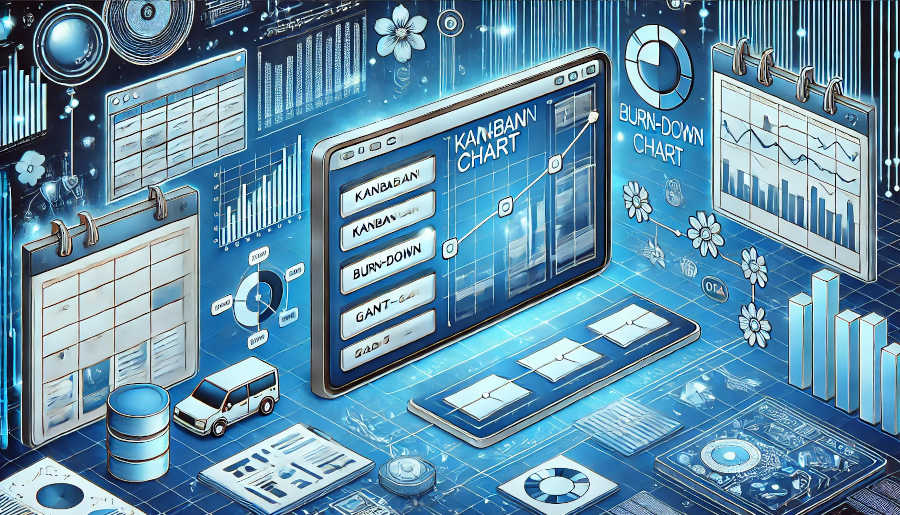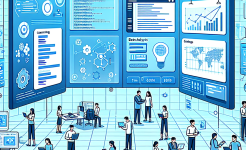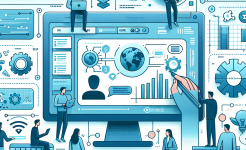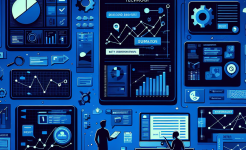Artificial Intelligence and Machine Learning
Artificial intelligence (AI) and machine learning (ML) are revolutionizing the way engineering projects are managed. These technologies can analyze large amounts of data to provide valuable insights and predictions. For example, AI-powered project management tools can forecast project schedules, identify potential risks, and optimize resource allocation.
In the planning phase, AI and ML algorithms can assess historical project data to determine the most likely project duration and resource requirements. This helps project managers make more accurate estimates and develop realistic schedules. Additionally, these technologies can continuously monitor project progress and compare it against the planned schedule, alerting managers to potential deviations and enabling them to take corrective actions promptly.
During the execution phase, AI and ML can be used to monitor and analyze real-time data from various sources, such as sensors and monitoring systems. This allows for early detection of issues or anomalies, enabling timely intervention to minimize the impact on the project. For instance, in a construction project, these technologies can monitor the structural integrity of the building in real-time, ensuring the safety of the workers and the quality of the project.
Internet of Things (IoT)
The Internet of Things (IoT) is another significant technology trend that is transforming engineering project management. IoT refers to the network of physical devices, vehicles, home appliances, and other items embedded with electronics, software, sensors, and connectivity that enables these objects to collect and exchange data.
In the context of engineering projects, IoT devices can be used to monitor the status and performance of equipment, materials, and the project site itself. For example, in a manufacturing project, sensors can be installed on machinery to monitor its operating parameters, such as temperature, pressure, and vibration. This data can be used to predict maintenance needs, reduce downtime, and improve the overall efficiency of the production process.
IoT also enables real-time tracking of materials and assets throughout the project lifecycle. By attaching RFID tags or other tracking devices to materials, project managers can have visibility into the location and movement of these items, ensuring that they are available when needed and reducing the risk of delays due to material shortages. Moreover, IoT sensors can be used to monitor the environmental conditions at the project site, such as temperature, humidity, and air quality, which is crucial for ensuring the quality of the work and the safety of the workers.
Building Information Modeling (BIM)
Building Information Modeling (BIM) is a digital representation of the physical and functional characteristics of a building or infrastructure project. It serves as a collaborative platform that integrates information from various disciplines, including architecture, engineering, and construction, throughout the project lifecycle.

BIM enables better visualization and coordination among project stakeholders. By creating a 3D model of the project, architects, engineers, and contractors can identify potential design conflicts and resolve them before construction begins. This reduces the likelihood of costly rework and delays during the construction phase. Additionally, BIM allows for more accurate quantity takeoffs and cost estimates, as the model contains detailed information about the materials and components required for the project.
During the construction phase, BIM can be used for construction sequencing and scheduling. The model can be used to simulate the construction process, identifying the most efficient sequence of activities and optimizing the use of resources. Moreover, BIM can facilitate communication and collaboration between the construction team and the project owner, as the model can be shared and accessed in real-time, providing up-to-date information about the project's progress and status.
Virtual and Augmented Reality
Virtual reality (VR) and augmented reality (AR) are emerging technologies that are having a significant impact on engineering project management. These technologies offer immersive and interactive experiences that can enhance the planning, design, and execution of engineering projects.
In the planning and design phase, VR and AR can be used to create virtual walkthroughs of the project site or building. This allows project stakeholders to visualize the final product before it is built, helping them to better understand the design and identify any potential issues. For example, architects can use VR to present their designs to clients, allowing them to experience the space as if they were actually inside it. This can lead to more informed decision-making and fewer design changes during the construction phase.
During the construction phase, AR can be used to provide workers with real-time information and instructions. By using smart glasses or other AR devices, workers can view digital overlays of the construction plans and specifications directly on the job site. This helps to improve the accuracy and efficiency of the construction process, as workers can access the information they need without having to refer to paper documents or digital screens. Additionally, VR can be used for training purposes, allowing workers to practice complex tasks in a virtual environment before performing them in the real world.
Big Data Analytics
Big data analytics is the process of collecting, analyzing, and interpreting large amounts of data to gain valuable insights and make informed decisions. In engineering project management, big data analytics can be used to manage and optimize various aspects of the project, including cost, schedule, quality, and safety.
By collecting and analyzing data from multiple sources, such as project management software, sensors, and documentation, project managers can identify patterns and trends that can help them make more accurate predictions and decisions. For example, data analytics can be used to analyze historical project data to identify the factors that contribute to project success or failure. This information can then be used to improve the planning and execution of future projects.
Big data analytics can also be used to monitor and control project costs. By analyzing cost data in real-time, project managers can identify areas where costs are escalating and take proactive measures to control them. Additionally, data analytics can be used to optimize the project schedule by identifying the critical path and potential bottlenecks, allowing for more efficient resource allocation and task sequencing.
In conclusion, the five major technology applications and trends discussed in this article - artificial intelligence and machine learning, the Internet of Things, Building Information Modeling, virtual and augmented reality, and big data analytics - are transforming the field of engineering project management. These technologies offer significant benefits in terms of improved project planning, execution, and control, as well as enhanced collaboration and decision-making among project stakeholders. As the engineering industry continues to evolve, it is essential for project managers to embrace these technologies and leverage their potential to deliver successful projects in an increasingly competitive environment. By staying at the forefront of technological innovation, engineering project management professionals can drive efficiency, improve quality, and achieve better project outcomes.
ARTICLE TITLE :5 major technology applications and trends in engineering project management ,AUTHOR :ITpmlib

















